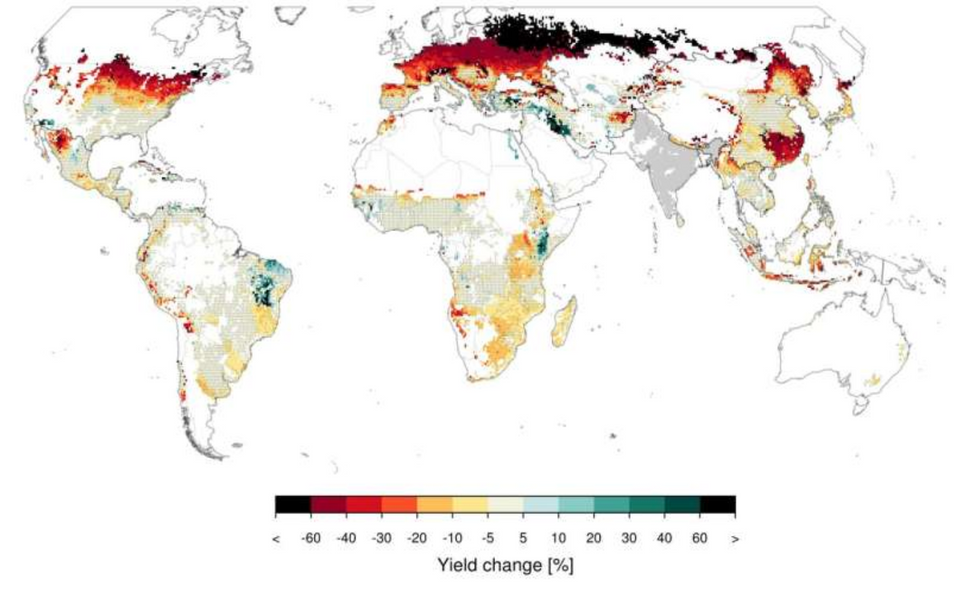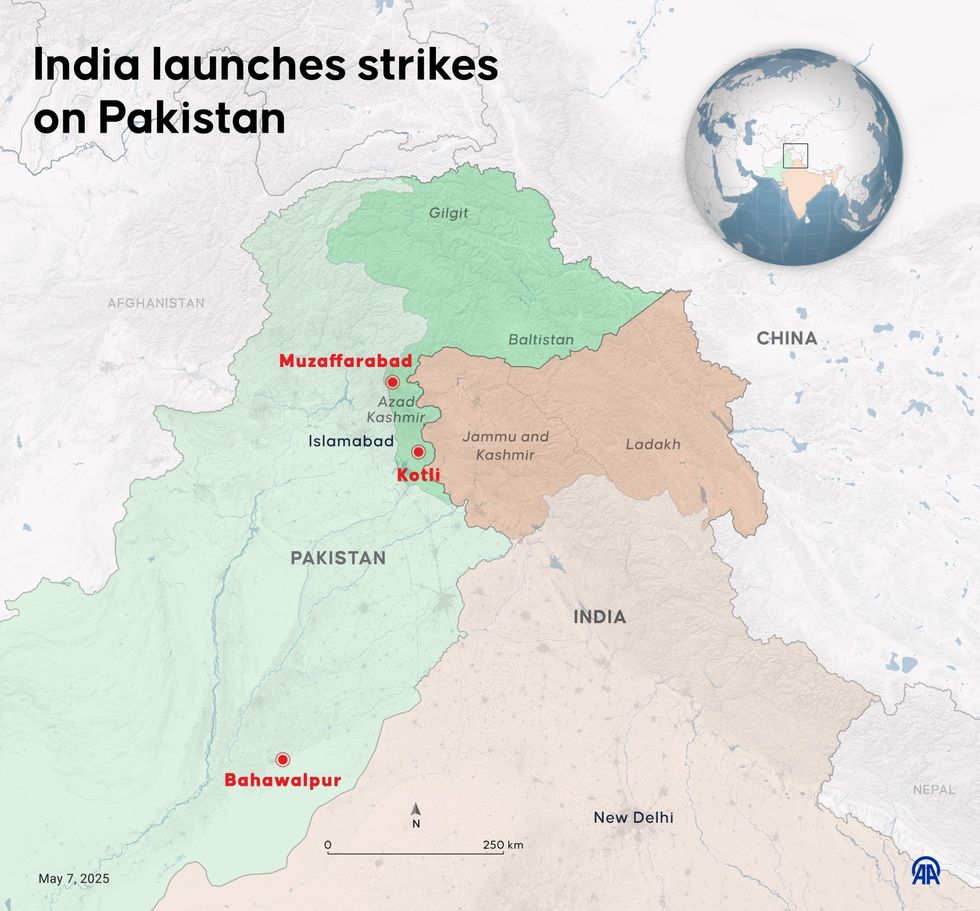SHOCK map shows escalating India-Pakistan conflict could spark 'nuclear winter' as far as Britain

Even a limited exchange between the two countries would cause unprecedented planet-wide food shortages and starvation, shock modelling shows
Don't Miss
Most Read
A limited nuclear exchange between India and Pakistan could cause a global famine and leave more than 100 million people dead, modelling shows.
It comes after Pakistan launched attacks on "multiple targets" across India following accusations of India firing missiles at three airbases inside their territory.
The tit-for-tat exchange started when India launched the largest aerial attack on its neighbour in more than 50 years earlier this week.
India fired a barrage of missiles into Pakistan and the disputed territory of Kashmir after a deadly terrorist attack in the part that India controls killed at least 26 tourists.
The focus now shifts to Pakistan’s reprisal. In the wake of India’s airstrikes, Pakistan unleashed a barrage of artillery fire across the Line of Control - the heavily militarised boundary slicing through Kashmir.
But a more coordinated attack is expected, with Pakistan’s army said it would hit back “at a time and place of its own choosing”.
This tit-for-tat exchange has revived fears of a nuclear confrontation between the two countries.

The scientists project that a limited nuclear exchange would cause production of the world's four main cereal crops ton plummet
|Adapted from Jägermeyr et al., 2020
Although the nuclear arsenals of the two countries dwarf those of the United States and Russia (India's stockpile sits at around 172 nuclear warheads — narrowly surpassing Pakistan's count of 170), a limited exchange could trigger a global famine, research suggests.
The study, published in the journal Proceedings of the National Academy of Sciences, examines the potential effects if they were to each set off 50 Hiroshima-size bombs—less than one per cent of the estimated world arsenal.
In addition to direct death and destruction, the authors say that firestorms following the bombings would launch some five million tons of soot toward the stratosphere.
There, it would spread globally and remain, absorbing sunlight and lowering global mean temperatures by about 1.8 degrees C (3.25 F) for at least five years.
The scientists project that this would in turn cause production of the world's four main cereal crops—maize, wheat, soybeans and rice—to plummet an average 11 per cent over that period, with tapering effects lasting another five to 10 years (see map above).
"Even this regional, limited war would have devastating indirect implications worldwide," said Jonas Jägermeyr, a postdoctoral scientist at the NASA Goddard Institute for Space Studies who led the study. "It would exceed the largest famine in documented history."
According to the 2020 study, crops would be hardest hit in the northerly breadbasket regions of the United States, Canada, Europe, Russia and China. But paradoxically, southerly regions would suffer much more hunger. That is because many developed nations in the north produce huge surpluses, which are largely exported to nations in the Global South that are barely able to feed themselves.
If these surpluses were to dry up, the effects would ripple out through the global trade system. The authors estimate that some 70 largely poor countries with a cumulative population of 1.3 billion people would then see food supplies drop more than 20 per cent.
Some adverse effects on crops would come from shifts in precipitation and solar radiation, but the great majority would stem from drops in temperature, according to the study.
LATEST DEVELOPMENTS:

India fired a barrage of missiles into Pakistan and the disputed territory of Kashmir early on Wednesday
| GETTY IMAGESCrops would suffer most in countries north of 30 degrees simply because temperatures there are lower and growing seasons shorter to begin with. Even modest declines in growing-season warmth could leave crops struggling to mature and susceptible to deadly cold snaps.
As a result, harvests of maize, the world's main cereal crop, could drop by nearly 20 per cent in the United States, and an astonishing 50 per cent in Russia.
Wheat and soybeans, the second and third most important cereals, would also see steep declines. In southerly latitudes, rice might not suffer as badly, and cooler temperatures might even increase maize harvests in parts of South America and Africa. But this would do little to offset the much larger declines in other regions, according to the study.
The finding is consistent with recent research from UCL. In the 2023 paper, scientists modelled the impact of a limited nuclear war between India and Pakistan and found it could kill 130 million people and deprive a further 2.5 billion of food for at least two years.











